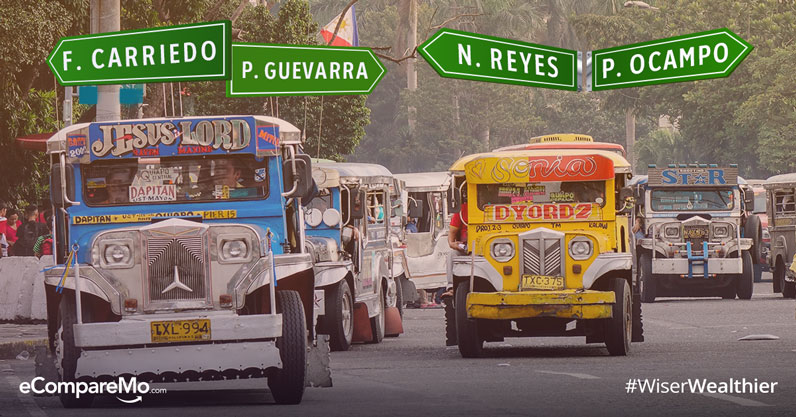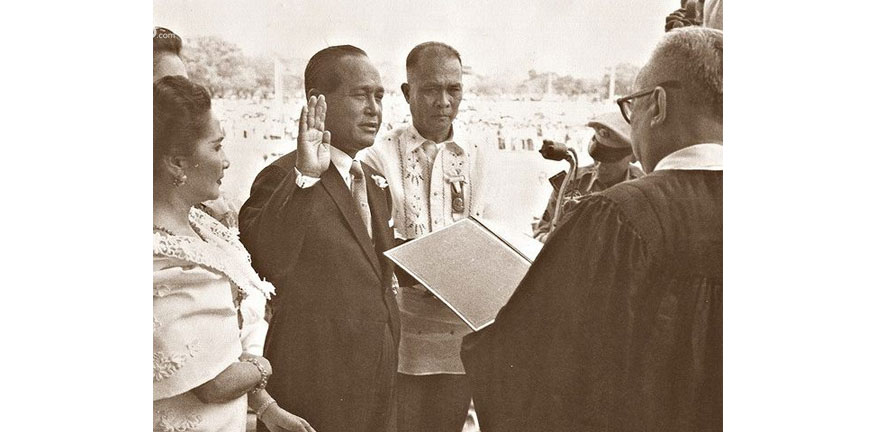Common Street Names In The Philippines And Who They’re Named After
6 min read
Gil Puyat. Gen. Luna. E. Rodriguez Sr. Pablo Ocampo. F. Blumentritt.
While many of us recognize them by way of street signs, who really knows who they’re named after? It’s time to put a face to these names and see this as an avenue to learn more about the streets of Metro Manila and beyond.
E. Rodriguez Sr.
There are three roads named after the longest-serving Senate President, Eulogio Rodriguez, who hailed from the town of Montalban, Rizal: one in Pasig, Quezon City, and Marikina. Aside from two major roads, his hometown was subsequently named after him, too.
Gil Puyat

Connecting Makati CBD to the coastal portion of Pasay City, Gil Puyat Avenue is named after former Senator Gil Puyat Sr., who also founded Manila Banking Corporation (now Chinabank Savings Bank) and Loyola Group of Companies. Interesting enough, the old name of the thoroughfare was also named after another late Philippine senator, Nicolas Buendia.
Marcos
The late strongman Ferdinand Marcos ordered tons of infrastructure projects in the country. To immortalize his efforts, he named three big highways after him: the Marikina-Infanta Highway, Radial Road 10, and the now-named Aspiras-Palispis Highway.
F. Manalo

Felix Manalo, or Ka Felix to his followers, was the founder of indigenous Christian church Iglesia Ni Cristo. As a tribute to the first leader of an influential religious group in the country, there are several streets that bear his name in the cities of Marikina, Pasig, Taguig, San Juan, Marikina, and others.
Gen. Luna
General Antonio Luna, one of the fiercest soldiers who fought the Americans during the Philippine-American War, has been immortalized by a multitude of streets named after him. Probably the most famous one that commemorates the valiant efforts of the brave general is the road that stretches from Intramuros to Paco in the City of Manila, which was formerly called Calle Real del Palacio.
Ferdinand Blumentritt
Blumentritt is just one of the many “Rizalian†streets of Sampaloc, but it’s not the only one. Numerous streets from different parts of the country were named after this Czech professor. To put it mildly, Blumentritt and Jose Rizal were BFFs. His numerous correspondences with the national hero played a crucial role in chronicling the life of Rizal. In addition, he also helped Rizal during the production of Noli Me Tangere and even wrote the preface to El Filibusterismo. Oh yeah, have we mentioned that they only met once?
Pablo Ocampo
During the American occupation of the Philippines, two Filipinos would be sent as delegates to the United States Congress as non-voting members. One of the first Filipino delegates to the United States in 1907 was Pablo Ocampo, who advocated for Philippine independence during his stint. After his two-year stint as the Resident Commissioner of the Philippines, he became a congressman during the Commonwealth era and then a vice mayor to the city of Manila. The main thoroughfare that stretches from Makati to Manila was named after him and another one in Project 4, Quezon City.
C. Palanca
Whether you were on the prowl for a night-out spot in Makati or losing your way under Quezon Bridge in Quiapo, you’ll encounter streets both named after Carlos Palanca Sr., a famous businessman who founded La Tondeña Distillers in 1902. Aside from the said streets, the prestigious Don Carlos Palanca Memorial Awards for Literature was named after him.
Pedro Guevarra
From a soldier to a statesman, Pedro Guevarra was instrumental in the formation of the republic. After serving as a soldier during the Philippine Revolution all the way up to the Philippine-American War, he was elected first as a congressman and then a senator. However, his biggest achievement was his participation in the United States Congress that led to the approval of the Tydings-McDuffie Act, which then led to the creation of the Philippine Commonwealth. His name can now be seen on street signs in Sampaloc and San Juan.
Rafael Palma
Before Jorge Bocobo became the fifth president of the University of the Philippines, the person who preceded him was Rafael Palma. If the last name seems familiar to you, that’s because he was the elder brother of Jose Palma, lyricist of the Philippine National Anthem. The other contributions that made him worthy of having streets in Quezon City and Makati bear his name are his stint in the Senate and the numerous books he authored about Jose Rizal and women suffrage.
C.P. Garcia

In 1996, the portion of C5 from Pasig River all the way to its junction with South Luzon Expressway was named Carlos P. Garcia Avenue, a nod to the former President who became famous because of his “Filipino First Policy.†Aside from the section of C5, there are other roads named after him in Quezon City, Tagbilaran City, Manila, and Cavite.
Magallanes
Ferdinand Magellan, the Spanish explorer that found his way in the Philippines in the 16th century, may not be able to conquer the country. But his name can be found hanging over streets in Makati, Intramuros, and even as far as Cavite.
Nicanor Reyes
Full-fledged Tamaraws will definitely know who this person is. But to the uninitiated, Nicanor Reyes Sr. is more than just the namesake of a street in Sampaloc and Loyola Heights. He served as one of the co-founders of Far Eastern University and was its first president from 1933 to 1945. The university also named its medical school in honor of Reyes.
Jorge Bocobo
According to a wiki devoted to the University of the Philippines, Jorge Bocobo was a man of many talents. To go further into details, he served as the president of the University, education secretary under Manuel L. Quezon, was a Supreme Court justice, and the principal author of the Civil Code of the Philippines. Honestly, the streets and Malate and Loyola Heights—not to mention the Bocobo Hall of the UP College of Law—are not enough to celebrate his contributions.
Felix Hidalgo
If ever you’ve been to the National Museum of Fine Arts, chances are you’ve seen Juan Luna’s magnum opus Spoliarium. Right across Luna’s humongous work of art is the El Asesinato del Gobernador Bustamante by his contemporary, Felix Resurreccion Hidalgo. Other award-winning works by Hidalgo include Las virgenes Cristianas expuestas al populacho, La barca de Aqueronte, Adios del Sol, and so much more. The streets named after him can be found in Quiapo and Rockwell in Makati.
Francisco Carriedo
Don Francisco Carriedo, a merchant who made a fortune from the galleon trade, willed P10,000 to the government of Manila in 1733 for one singular purpose: the creation of a waterworks project. Although it took more than a century to materialize, it gave the fund enough time to accrue interest of a whopping P354,000. In honor of his philanthropy, the project was named Carriedo Waterworks, a precursor to the current Metropolitan Waterworks and Sewerage System. He also has a train station and streets in Santa Cruz and San Juan bearing his name.
Felipe Calderon
Felipe Calderon may not be as widely known as his contemporaries in the creation of Malolos Constitution, but his contributions in the creation of the First Republic was just as crucial. Known as the “Father of Malolos Constitution,†he wrote the draft based on the constitutions of countries like Mexico, France, Belgium, and other former Spanish colonies. In honor of his legacy, streets were named after him in Quezon City, Marikina, and San Juan.
